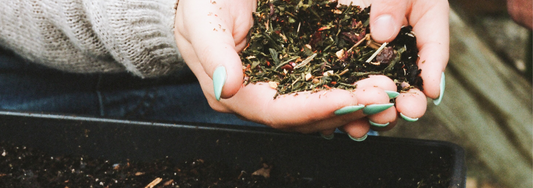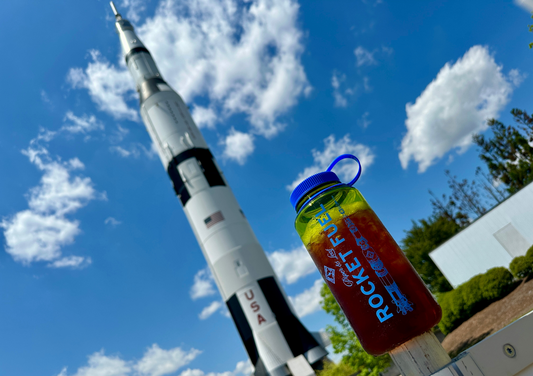There's nothing quite like a steaming cup of tea to soothe the soul and warm the heart. It's like a warm hug in a mug that can instantly lift your spirits. But have you ever wondered what goes into the perfect cup of tea? It's not just about dunking a teabag into hot water and hoping for the best. There's an art and science to tea brewing that can take your cup to the next level. As we traverse the science behind the perfect cup of tea, don your lab coat, put on your thinking cap, and voyage onward into the realm of all things tea.
Steep Time, Temperature and Total Triumph

First things first, let's talk about steeping. You hear it all the time and see it in all tea instructions, "Steep your tea for this many minutes." But what is steeping? Very simply, steeping means "to soak." It is the process of letting your tea leaves heat and expand in your desired vessel of choice. Each type of tea requires its own steeping time, which is necessary to coax out the flavors and essence of the tea. It's like a delicate dance of time and tea that requires your full attention. For example, black tea requires a steep time of 3-5 minutes, while green tea requires a steep time of 1-3 minutes, white tea requires a steep time of 2-3 minutes, oolong tea requires a steep time of 2-3 minutes, and tisanes (fruity, herbal) require a steep time of 5-10+ minutes (depending on your desired strength).
Did you know that what you steep your tea in can change the flavor of your cup? It's true! As your tea steeps, it expands and increases the surface area. The more room it has to do so, the more the flavor is able to steep and extract from the leaves. The key is to give your tea leaves plenty of space to stretch out and release their delicious goodness into the water. So, if you want the most flavor in your cup of tea, opt for a larger vessel to steep in. Trust me, your taste buds will thank you!
But hold on, steep time alone is not enough. Water temperature plays a crucial role in crafting the perfect cup. Did you know that water that is too hot can over-extract the tannins and make the tea taste bitter? And water that's too cold won't properly extract the flavor and aroma of the tea leaves. So, for black tea, the temperature should be 212°F, while green and white tea should be 175-180°F, and for oolong it should be 195°F, and for tisanes, it should be 212°F. Just like the children's book we all know and love, you need to find the brew temperature that's just right!

Now, let's talk about tea agitation. Tea agitation is like a massage that you give to your tea leaves to release the flavors and aroma of the tea leaves. It's like a gentle dance that encourages the release and distribution of those precious tea chemicals–tannins and caffeine–into the water. A gentle swirl or stir can make all the difference, ensuring a harmonious sip.
But what happens if you accidentally oversteep your tea? Don't worry, it happens to the best of us; it's not the end of the world! There are a couple of things you can do to fix it. First, you can adjust your steep time next time. Second, you can dilute the tea with a splash of water to tame the bitterness. And if that doesn't work, you can always add a pinch of sugar or honey to balance out the flavor.
Next Level Brewing
Now that we've covered the basics of tea brewing, let's talk about some tips and tricks that can take your tea game to the next level. Here are some things you can try to enhance the flavor and aroma of your tea:
1. Use fresh, high-quality tea leaves. The quality of the tea leaves can make a big difference in the taste and aroma of your tea. It's like using fresh ingredients in your cooking to make your dish stand out.
2. Use filtered water. Water quality can affect the taste of your tea, so it's best to use filtered water to ensure a clean and pure taste. It's like giving your tea a spa treatment with the best water possible.
3. Experiment with different brewing methods. There are many ways to brew tea, such as using our tea dripper, a Piper Press, or a tea ball. Experiment with different methods to find the one that works best for you.
4. Pair your tea with food. Tea can be a great accompaniment to food, especially when paired with complementary flavors. For example, green tea with sushi is a power duo, while black tea with chocolate is a match made in heaven.
5. Enjoy your tea in an atmosphere that suits you. Tea is not just a beverage, it's an experience. So, whether it is a cozy atmosphere with soft lighting and comfortable seating, or you prefer your tea on the go or shared with a friend, enhance your tea drinking by making it an experience rather than a task.

So, pause, and take a second to steep. There's nothing quite like the art of steeping tea leaves in hot water, watching them dance around, and eagerly anticipating the perfect cup. Going through the motions and steeping a cup of tea is one thing, but knowing and appreciating the science behind your cup makes your tea taste even better. It's the little things in life that make all the difference, and for us, it's tea. So, take a moment to indulge in the simple pleasure of brewing, grab a kit and explore each tea's unique flavor and aroma. Who knows, you might even discover your new favorite!




